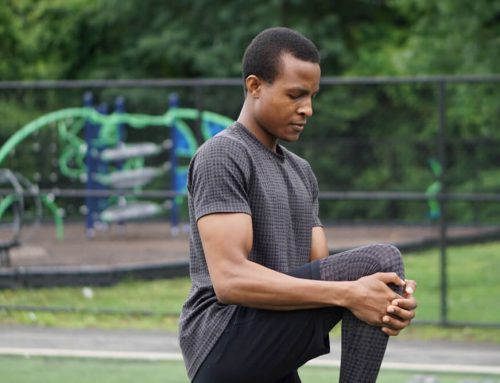Running is one of the most popular forms of exercise in the world. It’s a great way to improve your physical health, boost your mood, and reduce stress. Tips for Beginner Runners. It’s important to have some tips and guidelines to follow to ensure that you are starting off on the right foot.
Starting a running routine can be intimidating, especially if you have never run before or have been out of shape for a while. But with the right tips and guidance, anyone can become a successful runner.
In this article, we will provide 10 essential tips for beginner runners. These tips will cover everything from the gear you need to how to set realistic goals and monitor your progress. By following these tips, you can get started on your running journey with confidence and success.
1. Get the Right Gear
One of the most important things to consider when starting a running routine is the gear you will need. Having the right gear can make a big difference in your comfort and performance while running.
Investing in a good pair of running shoes is essential for anyone who wants to take up running. Running shoes are designed to support the feet and provide cushioning, which can help prevent injuries.
When choosing running shoes, it’s important to consider your foot type, running style, and the type of terrain you’ll be running on. It’s also a good idea to visit a specialty running store where you can get expert advice and try on different shoes before making a purchase.
In addition to good running shoes, it’s important to wear appropriate clothing for running. This includes moisture-wicking materials that will keep you cool and dry, as well as clothing that allows for ease of movement.
Consider the weather and time of day when choosing your running clothes. Dress in layers if it’s cold outside, and wear bright, reflective clothing if you’ll be running in low light conditions.
By investing in the right gear, you can set yourself up for success as a beginner runner.
2. Start Slow
As a beginner runner, it’s important to start slowly and gradually build up your mileage and intensity over time. This will help prevent injuries and allow your body to adjust to the demands of running.
Starting slowly has many benefits, including reducing the risk of injury and allowing your body to adapt to the physical demands of running. It also helps prevent burnout and allows you to build a solid foundation for your running routine.
The 10% rule is a guideline that many runners follow when increasing their mileage. This rule states that you should not increase your weekly mileage by more than 10% from one week to the next. This allows your body to adapt gradually and reduce the risk of injury.
For example, if you run 10 miles one week, you should not increase your mileage by more than 1 mile the following week. It’s important to listen to your body and adjust your mileage based on how you feel.
By starting slow and following the 10% rule, you can build a strong foundation for your running routine and reduce the risk of injury.
3. Warm-up and Cool-down
Warming up and cooling down are essential parts of any running routine. A proper warm-up helps prepare your body for the physical demands of running, while a cool-down can help prevent injury and reduce muscle soreness.
A proper warm-up should include dynamic stretching, which involves moving your joints through a full range of motion. This helps increase blood flow and oxygen to your muscles, which can improve performance and reduce the risk of injury.
Some examples of dynamic stretching exercises include high knees, butt kicks, and leg swings. It’s also a good idea to start your run at a slower pace and gradually increase your speed.
After your run, it’s important to cool down with some static stretching exercises, which involve holding a stretch for 15-30 seconds. This can help prevent injury and reduce muscle soreness.
Some examples of static stretching exercises include hamstring stretches, calf stretches, and hip flexor stretches. It’s also a good idea to walk or jog slowly for a few minutes to help bring your heart rate back down.
By incorporating a proper warm-up and cool-down into your running routine, you can reduce the risk of injury and improve your overall performance.
4. Hydration
Staying properly hydrated is crucial for runners, as dehydration can lead to fatigue, cramping, and even heatstroke. It’s important to drink enough water before, during, and after your run to maintain proper hydration levels.
When you run, you lose water through sweat, and it’s important to replace that fluid to maintain proper hydration levels. Even mild dehydration can lead to a decrease in performance and an increased risk of injury.
Before your run, it’s a good idea to drink 16-20 ounces of water at least an hour before you start. During your run, you should aim to drink 4-6 ounces of water every 20 minutes. After your run, you should drink at least 16 ounces of water for every pound of body weight lost during your run.
It’s also important to pay attention to your body’s thirst cues and drink water when you feel thirsty. If you’re running in hot or humid weather, you may need to drink more water to stay properly hydrated.
By staying properly hydrated, you can improve your performance and reduce the risk of injury while running.
5. Nutrition
Proper nutrition is important for all runners, whether you’re a beginner or an experienced athlete. Eating a balanced diet that includes the right nutrients can help improve your performance, speed up recovery, and reduce the risk of injury.
Before your run, it’s important to eat foods that provide you with energy without causing stomach discomfort. Some good options include oatmeal, whole grain toast with peanut butter, or a banana.
After your run, it’s important to eat a combination of carbohydrates and protein to help speed up recovery and rebuild muscle. Good options include a smoothie with fruit and Greek yogurt, a turkey sandwich on whole grain bread, or grilled chicken with roasted vegetables.
In addition to eating the right foods before and after your run, it’s important to maintain a balanced diet that includes plenty of fruits, vegetables, whole grains, and lean proteins. This can help provide your body with the nutrients it needs to perform at its best.
It’s also important to avoid processed foods and sugary drinks, which can cause inflammation and slow down recovery. Instead, focus on eating whole, nutrient-dense foods that will help fuel your runs and keep you healthy.
By eating a balanced diet that includes the right nutrients, you can improve your performance, reduce the risk of injury, and speed up recovery time after your runs.
6. Set Realistic Goals
Setting realistic goals is an important part of any running program. It can help keep you motivated, measure progress, and ultimately lead to success.
When you set achievable goals, you can break down your larger goals into smaller, more manageable pieces. This can make the process less overwhelming and increase the likelihood of success. Achieving these smaller goals can also provide a sense of accomplishment and motivation to keep going.
Setting goals can also help measure progress and make adjustments to your training program as needed. It’s important to keep in mind that progress is not always linear, and setbacks can happen. However, having a clear goal in mind can help keep you on track and focused on your overall objective.
When setting goals, it’s important to make them specific, measurable, achievable, relevant, and time-bound (SMART). This can help ensure that your goals are realistic and achievable. Here are some tips for setting effective goals:
- Start with a larger goal, such as running a 5K or 10K.
- Break down your larger goal into smaller, more manageable pieces. For example, if your goal is to run a 5K, your smaller goals could be to run a certain distance each week or to run for a certain amount of time each day.
- Make sure your goals are achievable and realistic. For example, if you’ve never run before, it may not be realistic to set a goal of running a marathon in a few months.
- Make your goals measurable. This can help you track your progress and adjust your training program as needed. For example, if your goal is to run a 5K, you could track your progress by timing yourself each week.
- Make your goals relevant to your overall objective. For example, if your overall objective is to improve your overall fitness, your goals could focus on increasing your running distance or speed.
- Make your goals time-bound. This can help provide a sense of urgency and keep you motivated. For example, if your goal is to run a 5K, you could set a specific date to achieve that goal.
By setting realistic and achievable goals, you can stay motivated, track progress, and ultimately achieve success in your running program.
7. Find a Running Buddy
Running can be a solitary activity, but finding a running buddy can provide a number of benefits.
Running with a partner can help keep you motivated and accountable. It can also make the experience more enjoyable and provide a social aspect to your workout routine. Here are some benefits of running with a partner:
- Motivation: Having a running buddy can provide motivation to stick to your routine and push yourself harder.
- Accountability: When you have a running partner, you’re more likely to show up for your scheduled runs and less likely to skip them.
- Safety: Running with a partner can provide an added level of safety, especially when running in unfamiliar areas or in low-light conditions.
- Socialisation: Running with a partner can provide a social aspect to your workout routine, which can make the experience more enjoyable.
Finding a running buddy can be challenging, but there are a number of ways to connect with other runners. Here are some tips for finding a running buddy:
- Join a running club: Joining a running club can provide an opportunity to connect with other runners who are at a similar fitness level.
- Attend group runs: Many running clubs or local running stores host group runs, which can provide an opportunity to meet other runners.
- Use social media: Social media can be a great way to connect with other runners in your area. Search for local running groups on Facebook or Instagram.
- Ask friends: Ask friends or coworkers if they’re interested in starting a running routine or if they know of anyone who is.
- Sign up for a race: Signing up for a race can provide an opportunity to meet other runners who are training for the same event.
By finding a running buddy, you can reap the benefits of added motivation, accountability, safety, and socialization, which can ultimately help you stick to your running routine and achieve your goals.
8. Track Your Progress
Tracking your progress is an important part of any fitness routine, and running is no exception. By monitoring your progress, you can see how far you’ve come and identify areas where you may need to improve. Here are some reasons why tracking your progress is important:
- Motivation: Seeing progress can provide motivation to keep going and push harder.
- Goal setting: Tracking your progress can help you set realistic goals based on your current fitness level.
- Identification of weaknesses: By tracking your progress, you can identify areas where you may need to improve, such as pace or distance.
- Accountability: Tracking your progress can help hold you accountable for your workouts and provide an opportunity to reflect on what is or isn’t working.
Tracking Methods
There are many ways to track your progress as a beginner runner. Here are some options:
- Running apps: There are a number of free and paid running apps available, such as Nike Run Club, Strava, or Runkeeper, that allow you to track your runs, monitor your progress, and connect with other runners.
- GPS watches: GPS watches, such as Garmin or Polar, can provide more detailed data, such as pace, distance, and heart rate.
- Journaling: Keeping a running journal can help you track your progress over time and reflect on what is or isn’t working.
- Running log: A simple running log can also be an effective way to track your progress and monitor your workouts.
No matter which tracking method you choose, the key is to use it consistently and regularly. This will help you stay motivated and focused on your goals as a beginner runner.
9. Listen to Your Body
As a beginner runner, it’s important to listen to your body and pay attention to any signals it may be giving you. Running can put stress on your joints and muscles. Here are some reasons why listening to your body is important:
- Avoid injury: By paying attention to how your body feels during and after a run, you can identify any potential problems and take steps to prevent injury.
- Prevent overtraining: Overtraining can lead to fatigue, burnout, and injury. By listening to your body, you can avoid overdoing it and give your body the rest it needs.
- Adjust your training: If your body is telling you that you need to slow down or take a break, it’s important to listen. Adjusting your training schedule can help prevent injury and keep you on track to achieving your goals.
Signs of Injury to Look Out For
- Pain: Any pain that persists or gets worse after a run could be a sign of injury.
- Swelling: Swelling in your joints or muscles could be a sign of inflammation or injury.
- Limited range of motion: If you’re experiencing stiffness or limited range of motion in your joints, it could be a sign of injury.
- Fatigue: If you’re feeling excessively tired or rundown, it could be a sign that you’re overtraining and need to take a break.
If you experience any of these symptoms, it’s important to rest, take a break from running, and seek medical attention if necessary. By taking care of your body and listening to its signals, you can avoid injury and stay on track to achieving your running goals.
Tips for Beginner Runners Conclusion
Congratulations on taking the first steps towards becoming a runner! Running is a great way to stay in shape, boost your energy, and improve your mental health. However, as a beginner runner, it’s important to take the necessary precautions to avoid injury and ensure that you enjoy the journey.
To recap, here are the 10 essential tips for beginner runners:
- Get the right gear
- Start slow
- Warm-up and cool-down
- Stay hydrated
- Eat a balanced diet
- Set realistic goals
- Find a running buddy
- Track your progress
- Listen to your body
- Enjoy the journey
By following these tips for beginner runners, you can build a solid foundation for your running journey and avoid common pitfalls that may discourage you. Remember to start slowly, gradually increase your mileage, and take care of your body by stretching and staying hydrated.
Lastly, keep in mind that running is not just about achieving your goals; it’s also about enjoying the journey. Running can be a great way to clear your mind, challenge yourself, and connect with others. So, don’t forget to have fun and appreciate the small victories along the way.
Good luck on your running journey!
For further help in your running journey see our Training Plans and Training Sessions.
If you like our brand and would like to support us see our Shop.






